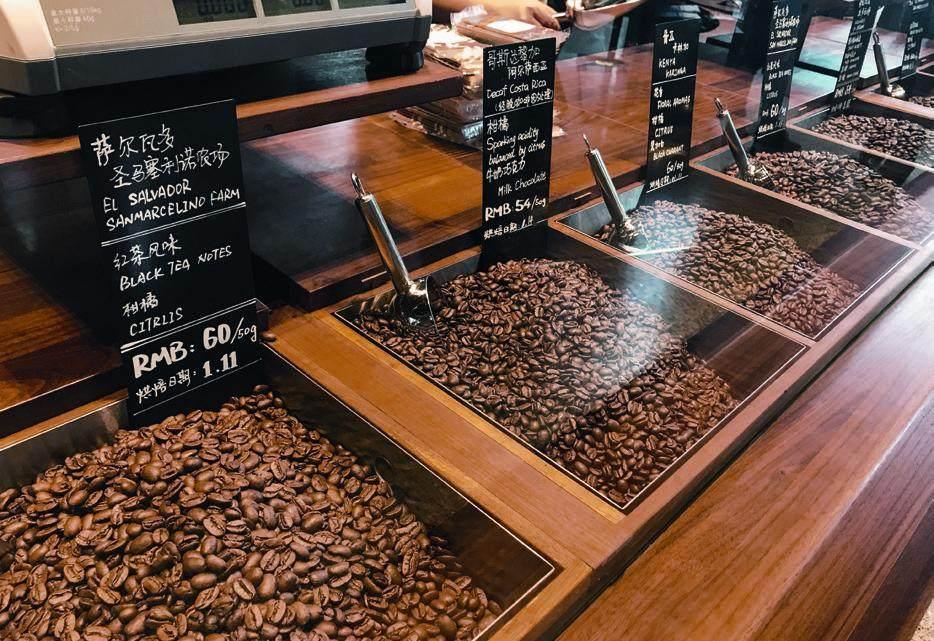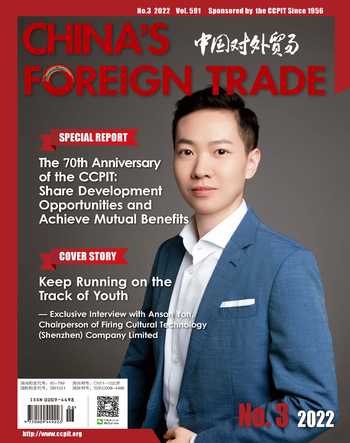What Is the Charm of the Coffee Market?
By Lynn Yu

Recently, Li Ning Sports(Shanghai) Co., Ltd. applied to register the trademark of“NING COFFEE”, which attracted a lot of attention. In response, the company said it would offer coffee services in its stores in the future to enhance customers comfort and experience when shopping. Providing coffee service in stores will be an innovative attempt by Li Ning for the retail end consumption experience. Yet when the store will officially start selling coffee was not disclosed.
Analysts point out that Li Ning has boldly crossed boundaries that unless there is a co-branded product that consumers are willing to experience it, it may be just an extension of the service. But some people regard that the new generation of consumers is the main driving force behind the popularity of coffee. By introducing new products with a youthful look, Li Ning can better foster a sense of identity among young customers.
Chinas coffee market is huge
The coffee market is a popular niche market that has recently been emerging. According to data released by iiMedia Research, the size of Chinas coffee market in 2021 was about RMB 381.7 billion and the sector is expected to maintain a growth rate of 27.2%. By 2025, the size of Chinas coffee market will reach RMB 1 trillion, with a growth rate of 27.2%, far exceeding the global average of 2%.
Capital has already poured into this niche market with high-speed growth. Statistics show that coffee-related projects have been funded 114 times from 2013 to 2021 with disclosed amount exceeding RMB 11.5 billion. With low entry barrier, relatively simple operation mode and high gross profit margin, the coffee market has been favored by all parties amid the colding new consumption wave.
According to the Insight Report on 2021 Coffee Health Trends, coffee ranks high in a national health recognition survey of mainstream beverages. The publics awareness of coffees health has been improved significantly and helping to reduce fat and protect liver has become new motivations for coffee consumption. The “breadth” and “depth” of research on coffee and health has been increasing year by year. From a global perspective, the research on coffee and health has lasted for more than 20 years and the number of literatures has exceeded 3,000. The health functions of coffee, such as liver protection, fat reduction, anti-oxidation and cardiovascular protection, are being proved one by one.
The cognitive enhancement of the health value of coffee has become a new engine driving the development of the coffee market and also activates the direction of product innovation. Consumers are switching from milk tea to coffee for health reasons. In the past two years, milk coffee products with high protein and plant base as the selling point have been on the hot sale with popular styles frequently emerged. Cold extract, bubble and other low-fat, low-calorie products are welcomed by fitness people.
Data from the Survey Report on Chinese Urban Coffee Shop shows that cities with higher attention to healthy diet have higher coffee consumption frequency. More than 58% of coffee drinkers in Shanghai drink more than four cups a week. In Guangdong Province, which ranks first in milk tea consumption, the proportion of Guangzhou residents who drink more than four cups of milk tea a week ranks third in China. According to the survey data, compared with the beginning of 2020, the proportion of users who choose freshly ground coffee in 2021 has significantly increased to 40%, among which people who care about health have become the main force of freshly ground coffee consumption.
The post-1995 generation, with their improved health awareness, has become the potential group to drive the rapid growth of coffee consumption. Among the respondents, the post-1995 generation is more focused on healthy diet than other age groups, accounting for 52%. The formation and strengthening of coffee health awareness may be one of the reasons for the post-1995 generation to increase coffee consumption. With increased consumption power and health awareness, the growth potential of the coffee market driven by the post-1995 generation will be further released.
Investment is pouring into the niche coffee market
The popular niche coffee market has not only attracted investment institutions, but traditional industrial capital is also pouring into the market. In this niche market, in addition to professional players such as Starbucks and Luckin Coffee, there are stateowned giants such as PetroChina, China Post and Sinopec, as well as players from sub-market such as Wanda, Tongrentang and Want Want.
In November of 2020, McCafe announced that it would invest RMB 2.5 billion within three years to accelerate the expansion of coffee market on the Mainland of China. Coffee giant Starbucks opened 654 new stores in China in 2021, setting a new record for store opening. Tims China, which entered the Chinese market in 2019, recently announced a total of USD 194.5 million finance and has opened 410 stores. It has announced that it will fully make profit by 2023.
Luckin Coffee has not only got rid of the financial fraud scandal, but also achieved profitability, and the number of new stores is likely to exceed 6,000. Coffee startup MANNER has opened 200 stores, and China Post opened its first post office coffee shop in February to enter the coffee niche market.
As of April 2021, the number of coffee shops in China has exceeded 100,000. Shanghai has 6,913 coffee shops in total, making it the city with the largest number of coffee shops in the world.
According to Deloittes white paper on Chinas freshly ground coffee industry, there were 108,000 coffee shops in China by the end of 2020, with 75% located in the second-tier and above cities. Based on the combined impact of future expansion plans of leading brands such as Starbucks, the epidemic and other changes in the competitive landscape, the number of coffee shops in China is expected to grow moderately, at a compound annual growth rate of about 5% in the next three years to reach 123,000 by 2023, and cities at different tiers experience a relatively average growth rate.
Tims Coffee entered the Chinese market in February 2019 and has opened more than 390 stores by the end of 2021, with the slogan of “opening at least 2,750 profitable stores by the end of 2026”.
In the past few years, coffee has been consumed more by pickup or takeout. Therefore, McCafe, which has its own “fast food” gene, began to make efforts. Relying on McDonalds offline parent stores and their employees, McCafe sets up “manual coffee bar”within McDonalds stores. The “storein-store” mode not only reduces the rent cost and the cost of recruiting and training new employees, but also can bring customer flow.
Coffee consumption under “fast scene” also breeds a new coffee species that is different from the social and business meeting space provided by Starbucks. Take-and-go stores represented by Luckin, Manner and Nowwa, and online instant coffee brands represented by Saturnbird and Yongpu meet the demands of coffee consumption for portability.
Nowwa has opened more than 1,500 stores in over 20 cities across China, and its current goal is to “open hundreds of stores in the new first-tier cities”. The location of Nowwa stores is very diversified, and they are normally small stores mainly for take-out orders. The operation and management cost of Nowwa stores is low, which ultimately reduces the cost for customers to buy coffee. For popular business areas, Nowwa also customizes the style of Internet celebrities.
Its time to invest in the coffee market
Li Yajun, Senior Investment Manager of Zhongwei Capital, believes that the time for coffee investment is ripe from the perspective of the degree of capital involvement and consumer habit education.
Stefanie, the founding partner of Neixiang Fund, led the team as the exclusive financial advisor for several rounds of Saturnbird financing and investment. As for why the expansion of the coffee sector occurred at this time, she said: “From the perspective of capital, the coffee investment boom is the inevitable trend after the tea investment boom, and it is an inevitable move of capital to continue to explore the possibility of offline catering. The involvement of capital accelerates the innovation of the sector and the rapid improvement of the basic quality of employees, making the industry expand rapidly.”
In terms of penetration rate, compared with the mature overseas coffee market, the overall penetration rate of coffee in China is still low. According to the data released by Deloitte, in 2020 the per capita annual coffee consumption on the mainland of China was 9 cups, only 3.21% of that in Japan, 2.74% of that in the United States and 2.45% of that in South Korea. Thus there is much room for improvement.
“The density of cafes in the firsttier cities is relatively saturated. In the future, the coffee market in the thirdand fourth-tier cities will definitely have certain penetration space and point resources, but innovation, integration, efficiency improvement and upgrading will be a macro trend. The efficient chain brands are merging with the independent cafes with poor economic benefits, and the new coffee brands are replacing the relatively old coffee shops,” Stefanie analyzed.
“The domestic coffee category still has a big dividend.” Compared with the small iteration in the overseas existing market, the Chinese market still has a big incremental potential. According to Chen Huilin, Vice President of investment at Qingtong Capital, new retail brands have put a lot of efforts in terms of ingredients, technology and packaging to make the taste more like freshly ground coffee, which on the one hand helps to create brand product image and on the other hand keep customer base and enhance customer loyalty.
Chen Huilin regard that “in the future, with less sensitivity to price, consumers will pay more attention to the origin of coffee, the variety of coffee beans and the story behind the brand, making coffee not just a drink, but a cultural and social attribute and lifestyle. Coffee brands should not only maintain their taste, but also develop into premium products to attract the new generation of consumers by virtue of the Internet”.
- China’s foreign Trade的其它文章
- The Beijing Initiative of the Global Trade and Investment Promotion Summit Was Released
- The 70th Anniversary of the CCPIT:Share Development Opportunities and Achieve Mutual Benefits
- CCPIT Signs MOU on Strategic Cooperation with SINOSURE
- The 2022 Boao Forum for Asia for Global Development and A Shared Future
- China and New Zealand Move to“RCEP+”Cooperation
- China Is Still Regarded As One of the Major Strategic Markets

